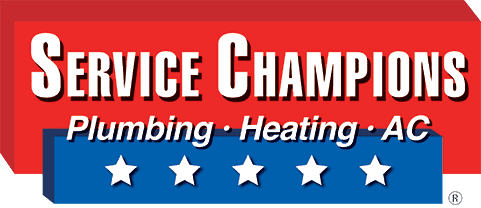AC Glossary for All Homeowners
When it comes to air conditioning terms, most terms can sound like a new language. Unless you already know the difference between a compressor and a condenser, a thermostat and thermidistat; it’s easy to quickly get confused. From A to Z, there are simple words every homeowner should know to better understand their AC system. For your convenience, here is an AC glossary for all homeowners.
A
Air Conditioner – A device or system that regulates and changes indoor air temperature, humidity levels, and air quality.
B
British Thermal Unit (BTU) – A British Thermal Unit, or BTU, is an international measurement of energy. The BTU is the amount of heat required to raise or lower the temperature of a pound of water by one degree. When used in relation to air conditioning, the measurement is used to know how many BTUs per hour the system can add to the air.
C
Coil – Also known as an “evaporator coil,” the coil is a main part of any AC system. The coil’s main function is to absorb heat from the air and send that treated, now cool, air into your home.
Compressor – The compressor, found in the outside AC unit, is a pump that distributes refrigerant based on the desired indoor air temperature.
Condenser – A condenser is a key part of your entire HVAC system. Located outside the home, the condenser releases or collects heat, depending on how you want to use it.
D
Damper – A damper is a moveable plate that can stop or regulate the flow of air. Dampers are located in the ductwork and are usually part of “zoning” systems.
Ductwork – Ductwork is a series of tubes strategically placed throughout a home to distribute treated air from a heating or cooling system.
E
EPA – The Environmental Protection Agency (EPA) is an independent agency whose goal is to protect human and environmental health. The EPA can suggest regulations that will benefit health and safety.
Evaporator Coil – See “Coil”
F
Fan – In HVAC terms, a fan, or air blower, moves treated air through the ductwork and into a building or structure.
Filter – A filter is something that should be changed twice every year. In HVAC terms, a filter catches and cleans treated air before it is released into the ductwork. A filter will pull dust, and other contaminants out of the treated air.
H
Humidifier – A humidifier adds moisture to your indoor air. Your AC system regulates humidity and the humidifier will add humidity if the air is too dry.
HVAC – HVAC is an abbreviation for heating, ventilation, and air conditioning.
M
MERV – MERV stands for maximum efficiency reporting value. In HVAC terms filters are given MERV ratings. The higher the MERV rating, the more airborne contaminates a filter will catch.
N
NATE – NATE stands for North American technician excellence. It is a non-profit owned and operated by HVAC technicians and give independent certifications.
R
R-22 – R-22 refrigerant is a chemical that keeps your treated air cool as it travels from your condenser to your home. R-22, or freon, is being phased out of production and is still used for AC units 10 years or older.
Refrigerant – Refrigerant is a fluid or gas used to absorb heat. When combined with a compressor and evaporator, it keeps your air cool.
Refrigerant Lines – Refrigerant lines connect your outdoor condenser to the indoor evaporator coil. These lines carry refrigerant and keep treated air cool.
S
SEER – SEER stands for seasonal energy efficiency ratio. Al HVAC systems are given a SEER rating. This rating is found by dividing the number of BTUs by the number of electric watts used.
Sensor – Sensors are used to measure the temperature in any given room. The sensors send this temperature back to the HVAC system, prompting the system to heat or cool the room depending on the thermostat setting.
Split System – A split system, or ductless, air conditioning unit is used when a home doesn’t have a furnace or existing ductwork. The split system consists of an outdoor condenser and indoor wall unit.
T
Thermidistat – A thermidistat monitors indoor temperature and humidity. It will adjust a heating or cooling system based on the desired thermostat settings.
Thermostat – Essentially, a thermostat controls and regulates the ambient temperature of an indoor space. A person can set a thermostat to a desired temperature, and the thermostat will ensure the indoor space stays that temperature.
V
Ventilator – A ventilator is essential for clean, fresh air. It circulates indoor air with filtered and treated outdoor air ensuring air is never stale.
Z
Zoning – The zoning system, also known as “zoned HVAC,” is an HVAC system that utilizes dampers and ductwork to move treated air throughout a home. It allows for customized temperature zones throughout the home.
Want to Know More? Call Service Champions!
Is the AC glossary not enough? Want to know more about your AC system or simply want to schedule a tune-up? The HVAC experts at Service Champions are here and ready to safely serve you. We proudly service parts of Los Angeles, Orange, and Riverside counties. Click here to request an appointment online, or reach out to one of our friendly call center representatives today!

